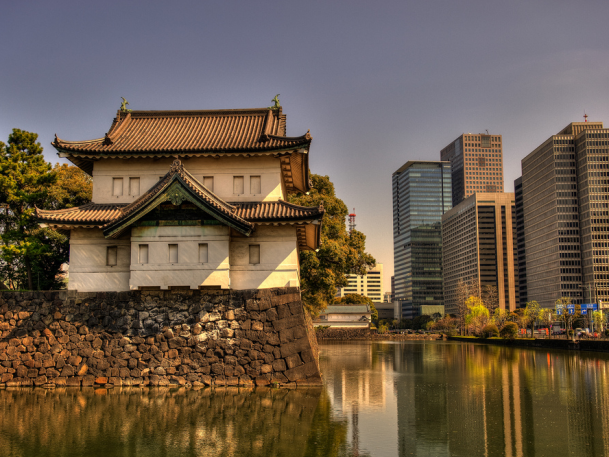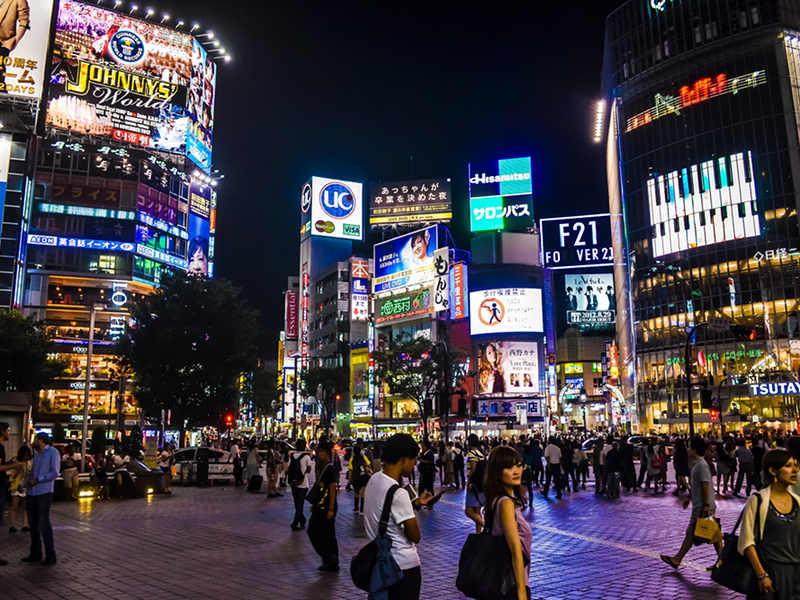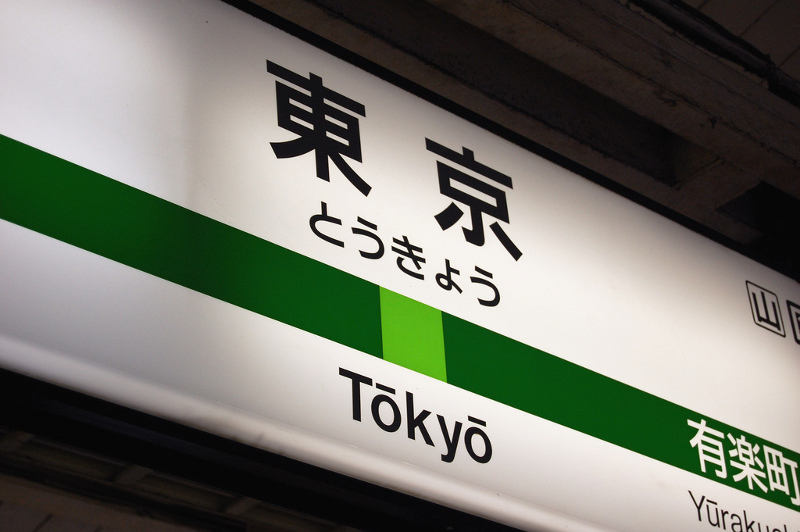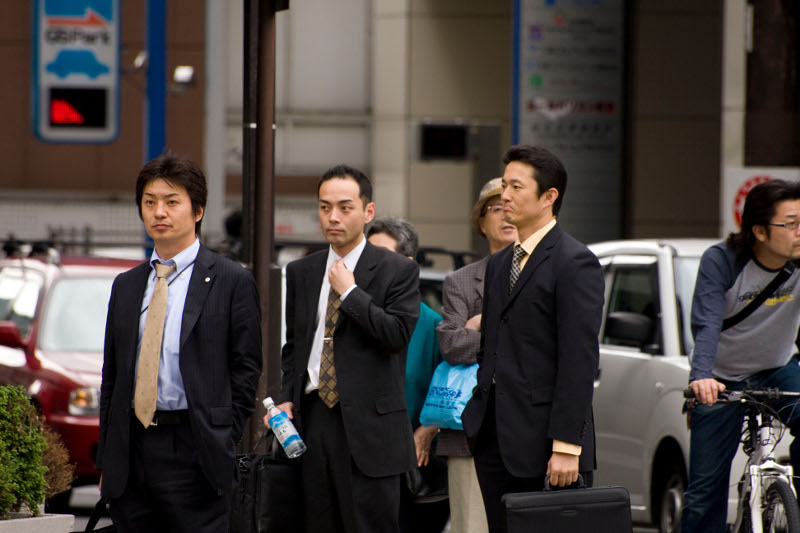
Having lived nearly my whole life just outside of New York City I had always thought it was one of the greatest cities in the world, and I still do. But there’s nothing like travel to broaden one’s perspective. Until I moved to Tokyo I had never realized how different cities could be and how much even a great city like New York could learn from other cities.
City of the Future
Flying from Newark International Airport into Narita International Airport can be a culture shock in itself. The change in service and the way airport attendants treat customers is marked – the move from Newark’s scowling TSA attendants to smiling and attentive workers at the bus ticket counter was enough to make me stop missing home pretty quickly. Despite common misconception, Narita Airport is not in Tokyo; the ride into the outskirts of the city is a long one and from the elevated highway could almost look like an American city, with the same varied buildings and familiar logos (who knew Bridgestone Tires were Japanese?). Central Tokyo, however, is quite different. The city is a metropolis made up of 23 different wards which are broken into districts of varying sizes, each with its own personality and feel. Some of the most well-known districts are: Harajuku, famed for its street fashion; Ginza, a major shopping district which is home to many international upscale brands; Shinjuku, often thought of as the “center” of Tokyo, and a personal favorite; Shibuya, a popular tourist destination with a varied and active nightlife – incidentally, also home to one of the busiest Starbucks shops in the world; and Marunounchi, the banking and financial district – just outside the Imperial Palace. It would be impossible to characterize Tokyo by visiting just one of these districts as the city is a wonderful blend of the old and the new.Once in the main city, it’s easy to see many differences between Toyko and New York City. There is still the noise and slightly rushed feeling that accompanies many cities, but the city also feels cleaner and less cramped. The spacious feeling on the main roads could be due to the comparatively few skyscrapers compared to NYC. Japan’s location near major fault lines and its consequent propensity for earthquakes has, in the past, necessitated fewer skyscrapers. This has been changing, however, with new developments in seismic proofing. These developments have enabled the building of the famed Tokyo Skytree, which, on completion in early 2011 was the second tallest structure in the world after the Burj Khalifa in the UAE.
Central Tokyo, however, is quite different. The city is a metropolis made up of 23 different wards which are broken into districts of varying sizes, each with its own personality and feel. Some of the most well-known districts are: Harajuku, famed for its street fashion; Ginza, a major shopping district which is home to many international upscale brands; Shinjuku, often thought of as the “center” of Tokyo, and a personal favorite; Shibuya, a popular tourist destination with a varied and active nightlife – incidentally, also home to one of the busiest Starbucks shops in the world; and Marunounchi, the banking and financial district – just outside the Imperial Palace. It would be impossible to characterize Tokyo by visiting just one of these districts as the city is a wonderful blend of the old and the new.Once in the main city, it’s easy to see many differences between Toyko and New York City. There is still the noise and slightly rushed feeling that accompanies many cities, but the city also feels cleaner and less cramped. The spacious feeling on the main roads could be due to the comparatively few skyscrapers compared to NYC. Japan’s location near major fault lines and its consequent propensity for earthquakes has, in the past, necessitated fewer skyscrapers. This has been changing, however, with new developments in seismic proofing. These developments have enabled the building of the famed Tokyo Skytree, which, on completion in early 2011 was the second tallest structure in the world after the Burj Khalifa in the UAE.
The Art of Perfection
Being a very traditional society has held Japan back in many ways. The country only opened its borders to trade with western countries in the mid 1800s and since then adoption of international customs and styles has had many starts and stops, and vast ups and downs. However, Japan’s ability to preserve its culture has many positive aspects – a main one being the culture’s focus on perfection in every aspect of life. In a culture where people spend years training and learning how to dress someone in a traditional kimono, or how to serve perfect sushi, you can be sure of quality in every area. One area that the Japanese have perfected which is very notable to Americans is the train service. Anyone who has experience NY transit can imagine my surprise as the apologetic announcement was made across the train platform that the train would be delayed by one minute and they were so terribly sorry for any inconvenience this might cause the honored customers. New York City’s MTA services suddenly paled in comparison to the JR East Railway – an efficiently operated, courteously run, clean transit system. Verbal and written announcements at every train station in both Japanese and English, and an abundance of easy-to-find route maps made the services easy to use, even for those new to Japan. The “Suica” metro cards were refillable touch-cards scanned as you enter or exit a train station – no NYC-style traffic jams at the gates as people swipe, swipe and “swipe again at this turnstile.”The Japanese focus on providing quality service extends to retail as well, where a common saying is okyakusama wa kamisama desu (お客様は神様です) or “the customer is god.” Customers are greeted upon entering a store, but then left alone to shop. Should you need any help, employees will bend over backwards to accommodate your requests and apologize profusely should they not have the item you are looking for.Restaurants often specialize in one main type of food, such as ramen, or sushi and chefs spend years perfecting their craft. This is one area New York has caught on to; Manhattan has welcomed one of the top sushi chefs in Japan, Daisuke Nakazawa (seen in the critically acclaimed documentary Jiro Dreams of Sushi) who has started his own restaurant in the West Village, Sushi Nakazawa.
One area that the Japanese have perfected which is very notable to Americans is the train service. Anyone who has experience NY transit can imagine my surprise as the apologetic announcement was made across the train platform that the train would be delayed by one minute and they were so terribly sorry for any inconvenience this might cause the honored customers. New York City’s MTA services suddenly paled in comparison to the JR East Railway – an efficiently operated, courteously run, clean transit system. Verbal and written announcements at every train station in both Japanese and English, and an abundance of easy-to-find route maps made the services easy to use, even for those new to Japan. The “Suica” metro cards were refillable touch-cards scanned as you enter or exit a train station – no NYC-style traffic jams at the gates as people swipe, swipe and “swipe again at this turnstile.”The Japanese focus on providing quality service extends to retail as well, where a common saying is okyakusama wa kamisama desu (お客様は神様です) or “the customer is god.” Customers are greeted upon entering a store, but then left alone to shop. Should you need any help, employees will bend over backwards to accommodate your requests and apologize profusely should they not have the item you are looking for.Restaurants often specialize in one main type of food, such as ramen, or sushi and chefs spend years perfecting their craft. This is one area New York has caught on to; Manhattan has welcomed one of the top sushi chefs in Japan, Daisuke Nakazawa (seen in the critically acclaimed documentary Jiro Dreams of Sushi) who has started his own restaurant in the West Village, Sushi Nakazawa.
Tokyo Tech Capital… Or not?
In the past Tokyo has been synonymous with technology and electronics innovation, with big names such as Panasonic, Sharp, and Sony leading the way. However in recent years these companies have not seen much growth and seem to be falling behind in a world that continues to innovate and create at a furious pace. Many factors could be involved in this decline, and this may actually be another area where Japan’s introspectiveness and traditional culture has hindered it. While Tokyo is often thought of as a highly modern technologically advanced society, business itself in the capital has persisted in being traditional and fairly old-fashioned. It’s still highly unusual to see women or young people in positions of power, and in a country where faxing is still a main form of communication it’s not difficult to imagine what else could be holding companies back.However, Japan’s young people are not idle. While Tokyo is still not the type of steadily growing technology center we can see in cities such as Berlin or New York, there is a lot of innovation coming out of Japan, especially in robotics, with a Japanese team taking first place points in the 2013 international DARPA (Defense Advanced Research Projects Agency) Robotics Challenge.The New York Times also reports a surge in internet-savvy tech entrepreneurs in recent years, with startups popping up all over the country and Tokyo leading the way with the establishment of incubators to foster this new generation. For such a cautious culture in which failure is synonymous with shame and embarrassment it is not surprising that entrepreneurism has taken such a long time to gain popularity. The country saw a surge in entrepreneurial interest in the early 2000s, but when popular and successful entrepreneur Takafumi Horie, who had become the poster-child for entrepreneurism in the country, was arrested and imprisoned for securities fraud in 2006, the trend fizzled. Many took it as a type of moral tale warning against non-conformity and unconventional business models.While the country still has a long way to go before it will be competitive in the global market, the trend right now is a modest but hopeful start. The New York Times article quotes Shigeo Kagami, a business professor who helps run the University of Tokyo incubator, “the fact this is happening at all is a big chance for Japan. […] As Steve Jobs showed, it only takes one or two success stories to change the world.”
Flexibility and Diversity – the NYC Way
If the tech community in Toyko is to flourish, the city will have to embrace a more open mindset toward new ideas and a more diverse city demographic. NYC is well ahead of many global cities in both of these areas. Having a flexible mindset which allows business to move forward without getting bogged down in protocol and formality is crucial in today’s fast-moving tech world. Telecommuting, setting one’s own hours, and eliminating dress codes are just a few of the trends in the startup community geared toward focusing on employee creativity and happiness in order to better the company overall. Tokyo could easily be held back by its traditional approach to business, heavy formalities, and its stickler attitude that many years of experience at the same company are needed before someone is worthy of respect in their field. In the startup world a company can rocket to success in months and Tokyo needs to prepare not to quash this more casual fast-paced generation of businesses.New York City also leads the way in cultural diversity, though this is largely due to its history, even today the city does much to embrace its multi-cultural heritage – something Tokyo very much needs to learn to do. Although Tokyo is the largest metropolitan area in the world, it has a noticeable homogeneity which creates a society largely unaware of its own cultural bias. Many citizens operate with a pleasant but oblivious racism toward anyone who is not Japanese and while there is rarely any negative intent, it is often quite insulting and frustrating. Broad assumptions are made based on ethnicity and there is a complete innocence of the knowledge that there is anything wrong in doing this.This type of attitude can be a hindrance to a city which strives to be global – and in a country with such high education standards it is still surprising how little international cultural education exists. Tokyo would do well to focus more on encouraging international understanding on a governmental level and to incorporate a global mindset into their education system.Japan must find a way to preserve its culture and traditions without risking stagnation. With increased globalization we can look forward to more idea-sharing between major world cities such as Tokyo and New York and hopefully we can each learn to adopt one-another’s best qualities such as efficiency and flexibility. We certainly hope that New York City eventually takes a leaf out of Tokyo’s book when it comes to transportation!
Having a flexible mindset which allows business to move forward without getting bogged down in protocol and formality is crucial in today’s fast-moving tech world. Telecommuting, setting one’s own hours, and eliminating dress codes are just a few of the trends in the startup community geared toward focusing on employee creativity and happiness in order to better the company overall. Tokyo could easily be held back by its traditional approach to business, heavy formalities, and its stickler attitude that many years of experience at the same company are needed before someone is worthy of respect in their field. In the startup world a company can rocket to success in months and Tokyo needs to prepare not to quash this more casual fast-paced generation of businesses.New York City also leads the way in cultural diversity, though this is largely due to its history, even today the city does much to embrace its multi-cultural heritage – something Tokyo very much needs to learn to do. Although Tokyo is the largest metropolitan area in the world, it has a noticeable homogeneity which creates a society largely unaware of its own cultural bias. Many citizens operate with a pleasant but oblivious racism toward anyone who is not Japanese and while there is rarely any negative intent, it is often quite insulting and frustrating. Broad assumptions are made based on ethnicity and there is a complete innocence of the knowledge that there is anything wrong in doing this.This type of attitude can be a hindrance to a city which strives to be global – and in a country with such high education standards it is still surprising how little international cultural education exists. Tokyo would do well to focus more on encouraging international understanding on a governmental level and to incorporate a global mindset into their education system.Japan must find a way to preserve its culture and traditions without risking stagnation. With increased globalization we can look forward to more idea-sharing between major world cities such as Tokyo and New York and hopefully we can each learn to adopt one-another’s best qualities such as efficiency and flexibility. We certainly hope that New York City eventually takes a leaf out of Tokyo’s book when it comes to transportation!

